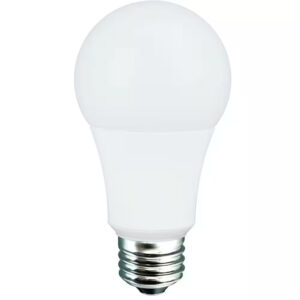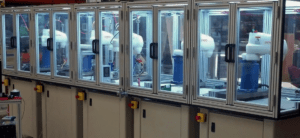
Until recently, incandescent and fluorescent lights have been the standard in most homes and public spaces. However, the efficiency of LED lights make them a much better option. The first LED light was created over 50 years ago and the benefits of LED light quickly became well-known. LED lights can have a major impact on reducing the running costs of interior and exterior lighting in private homes, public buildings, and commercial properties. If you want to increase you energy efficiency, LED lights are the best and cheapest option.
Longer lifespan + energy efficiency
One of the biggest benefits to using LED lights over conventional lights is their long lifespan. If a light were used for six hours a day over a twenty year period, you would have to change an average fluorescent light bulb 9 times. A halogen light bulb would need to be replaced 14 times, and an incandescent light bulb would need to be changed 37 times. For just one light bulb, that might not seem like much, but multiply that by every light bulb in a house, apartment building or hotel, and the cost begins to add up quickly. An LED light, on the other hand, will last well over two decades.
Environmental impact
Compared to traditional incandescent and fluorescent lighting, LED lights consume up to 85% less energy when using low voltage DC power conversions. Plus, with their longer lifespan, switching to LED lights will reduce the number of light bulbs that are thrown away each year.
LED light bulbs also have lower carbon emissions. Not only do they use less conventionally generated energy, there are no poisonous elements used in making LED lights. Traditional lighting, on the other hand, often uses mercury and other noxious and polluting gases in their bulbs.
In traditional lighting, much of the light produced travels away from where it is needed, but with LED lights, there is virtually no light wasted. This is because LED light is directional and only projected where it is needed by using a reflector or optical guidance. With LEDs, light pollution is virtually eliminated.

